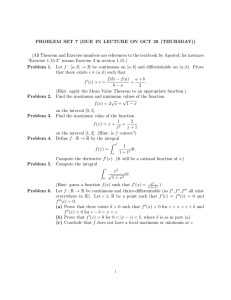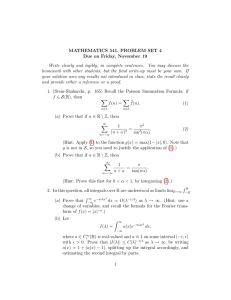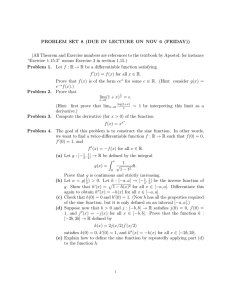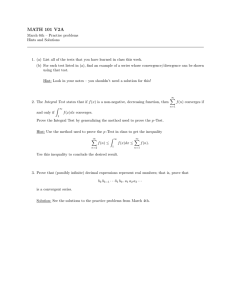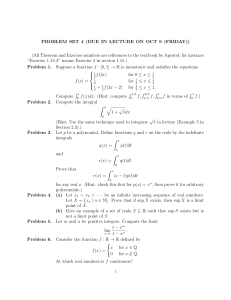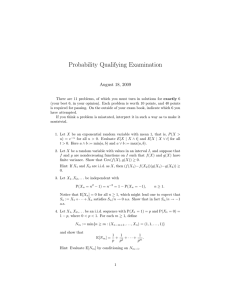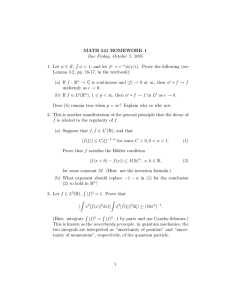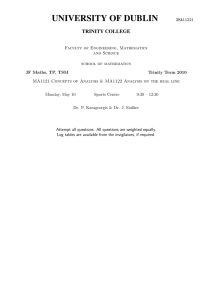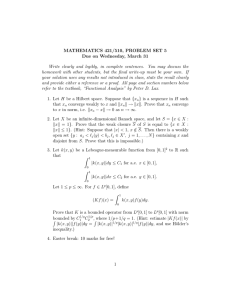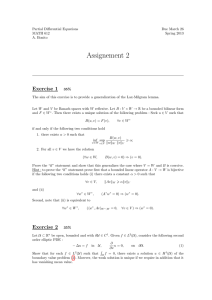PROBLEM SET 11 (DUE IN LECTURE ON DEC 4 (FRIDAY))
advertisement
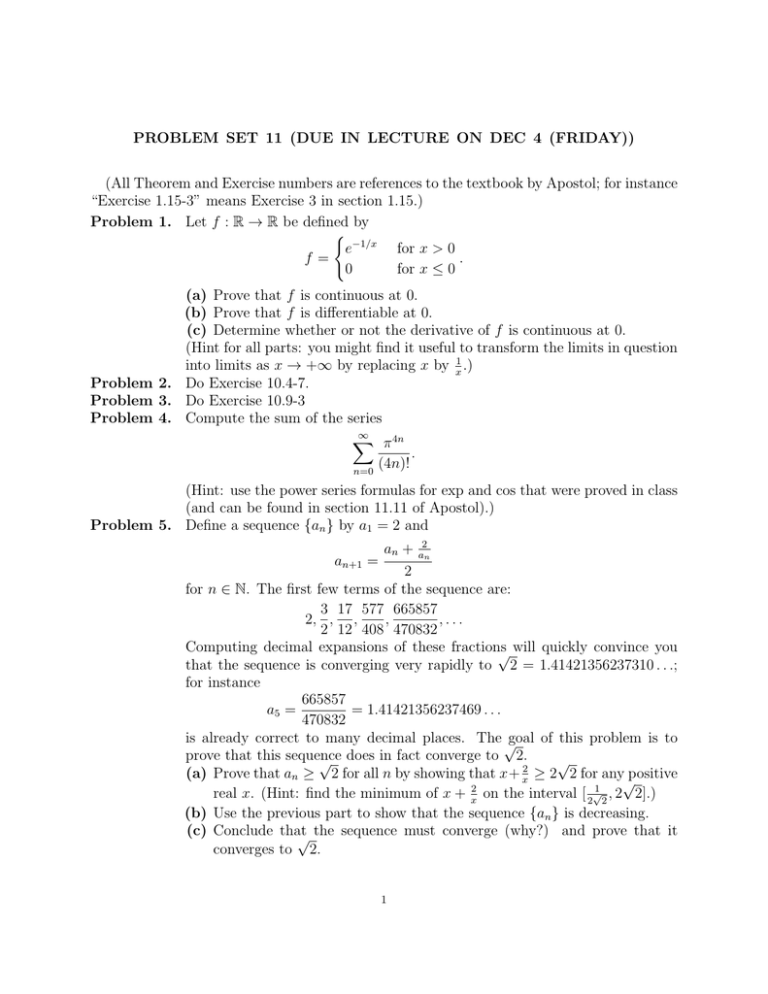
PROBLEM SET 11 (DUE IN LECTURE ON DEC 4 (FRIDAY))
(All Theorem and Exercise numbers are references to the textbook by Apostol; for instance
“Exercise 1.15-3” means Exercise 3 in section 1.15.)
Problem 1. Let f : R → R be defined by
(
e−1/x for x > 0
f=
.
0
for x ≤ 0
(a) Prove that f is continuous at 0.
(b) Prove that f is differentiable at 0.
(c) Determine whether or not the derivative of f is continuous at 0.
(Hint for all parts: you might find it useful to transform the limits in question
into limits as x → +∞ by replacing x by x1 .)
Problem 2. Do Exercise 10.4-7.
Problem 3. Do Exercise 10.9-3
Problem 4. Compute the sum of the series
∞
X
π 4n
.
(4n)!
n=0
(Hint: use the power series formulas for exp and cos that were proved in class
(and can be found in section 11.11 of Apostol).)
Problem 5. Define a sequence {an } by a1 = 2 and
an+1 =
an +
2
an
2
for n ∈ N. The first few terms of the sequence are:
3 17 577 665857
2, , ,
,
,...
2 12 408 470832
Computing decimal expansions of these fractions
√ will quickly convince you
that the sequence is converging very rapidly to 2 = 1.41421356237310 . . .;
for instance
665857
a5 =
= 1.41421356237469 . . .
470832
is already correct to many decimal places. The √
goal of this problem is to
prove that this sequence
√ does in fact converge to 2.2
√
(a) Prove that an ≥ 2 for all n by showing that x+ x ≥ 2 2 for any positive
√
real x. (Hint: find the minimum of x + x2 on the interval [ 2√1 2 , 2 2].)
(b) Use the previous part to show that the sequence {an } is decreasing.
(c) Conclude that
√ the sequence must converge (why?) and prove that it
converges to 2.
1

